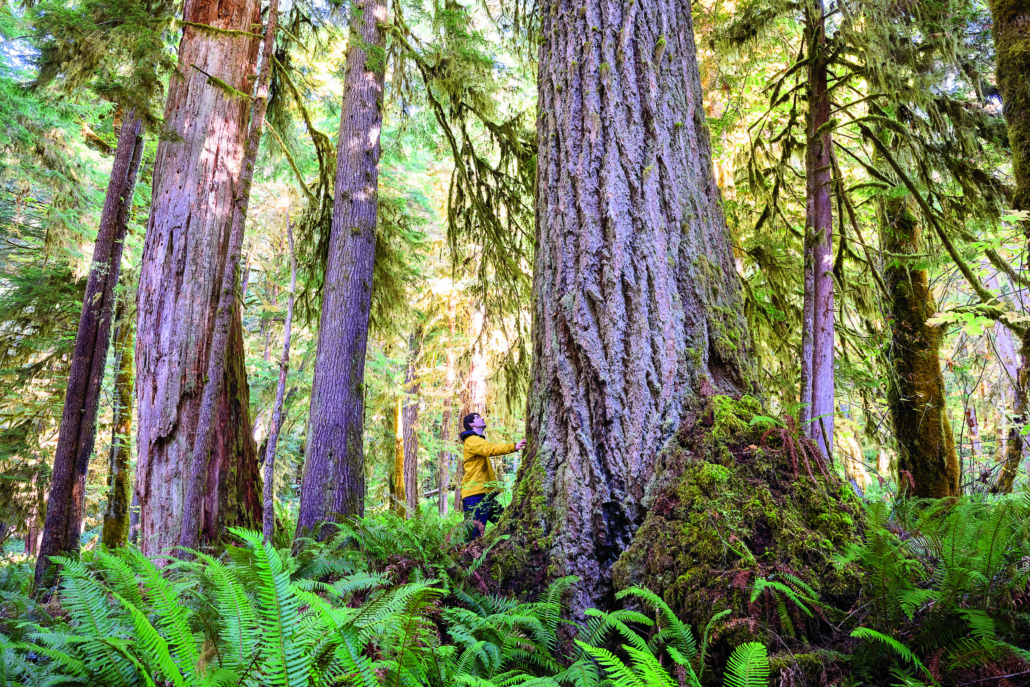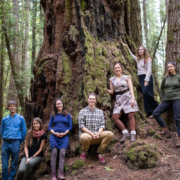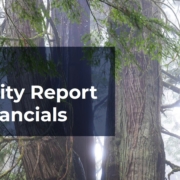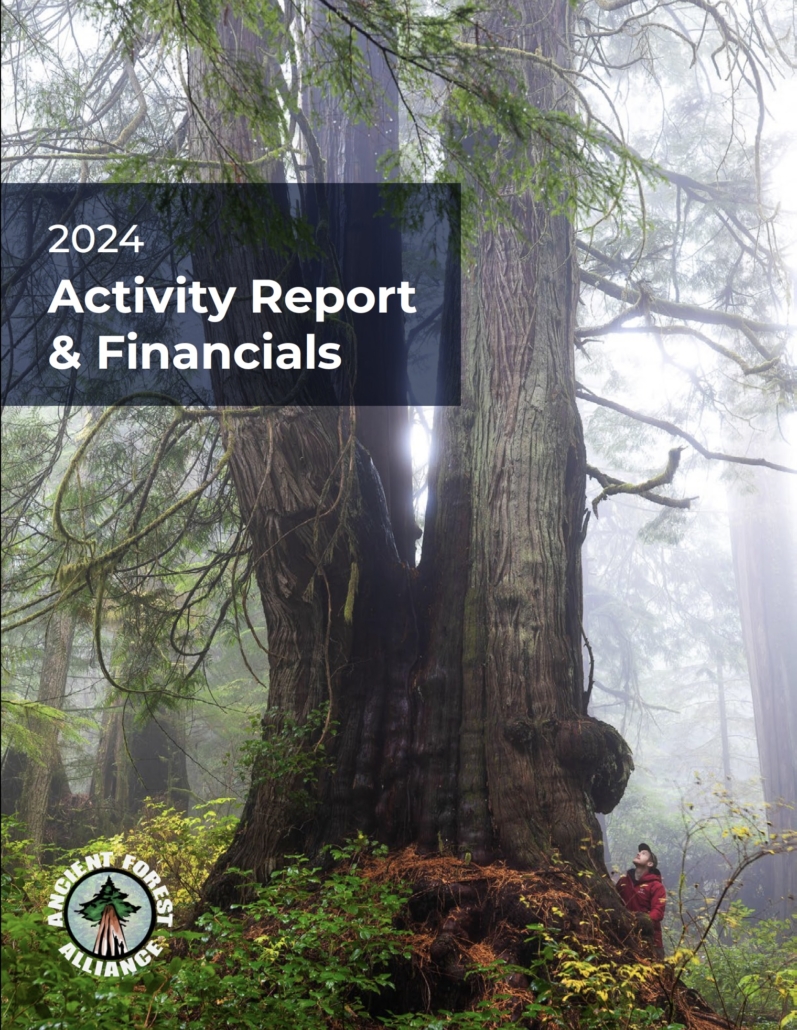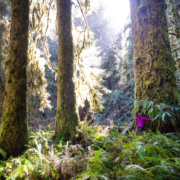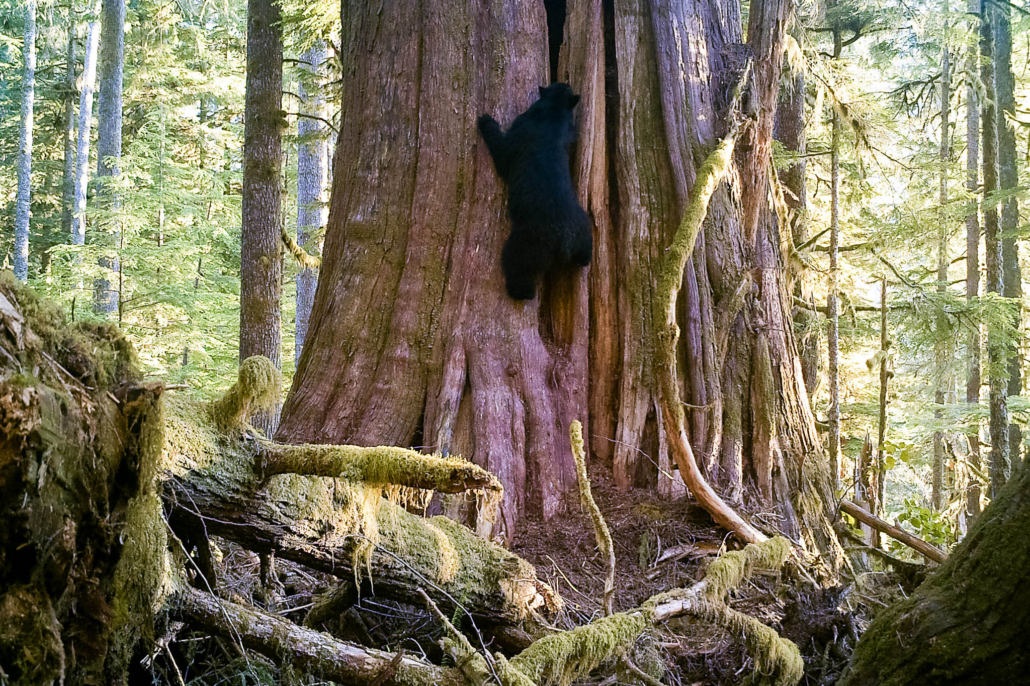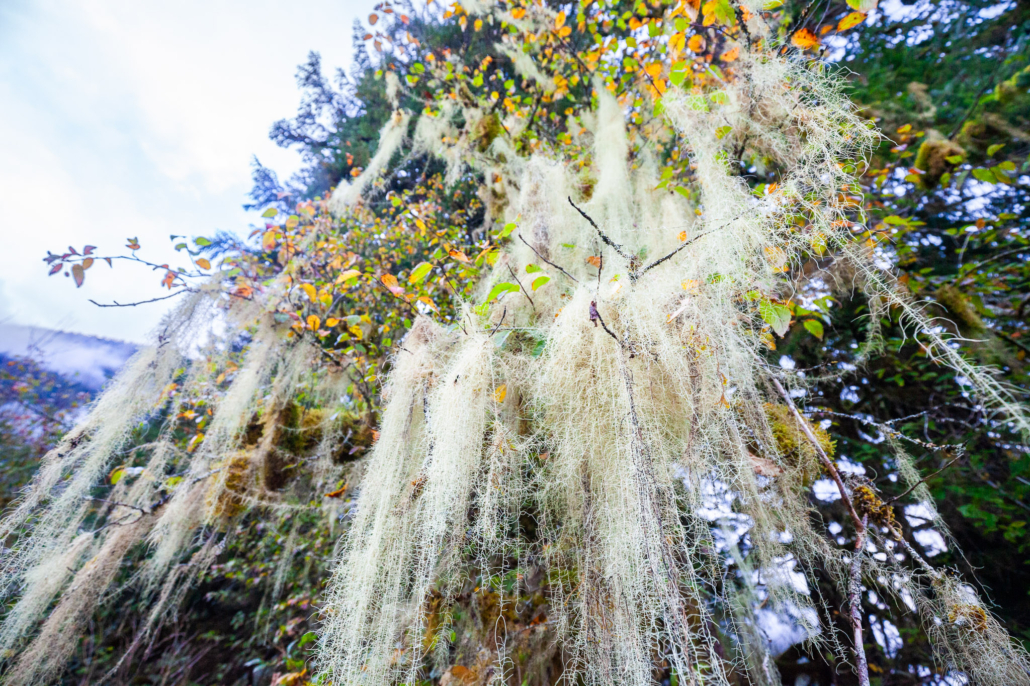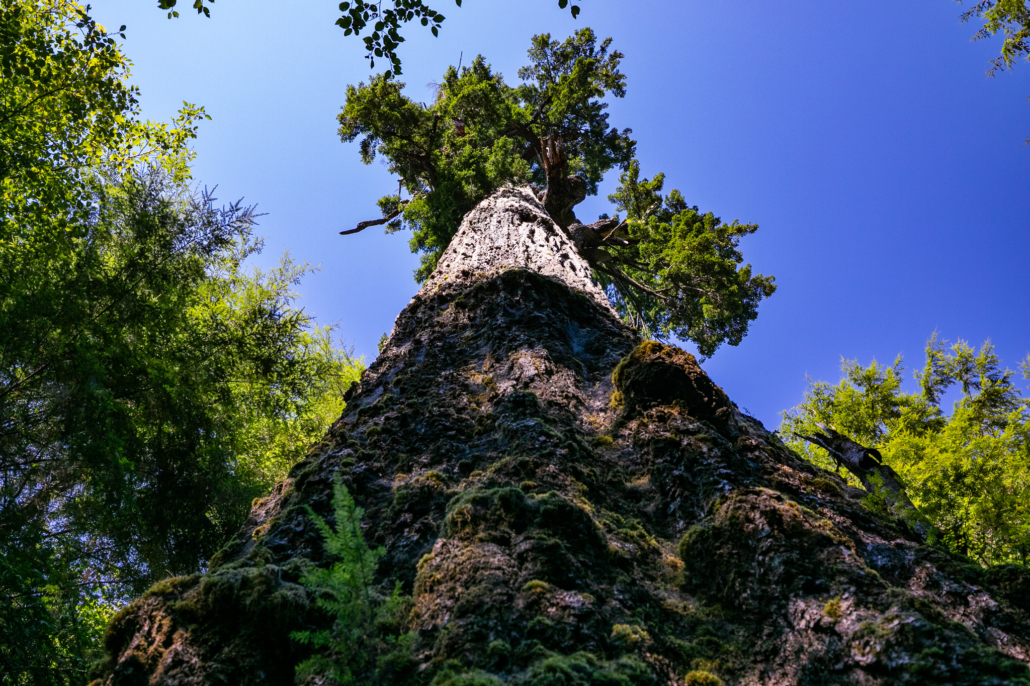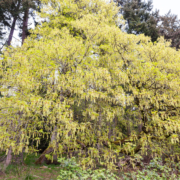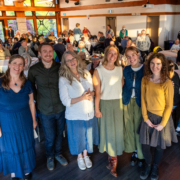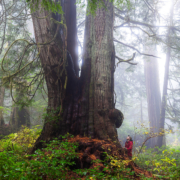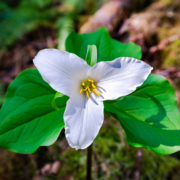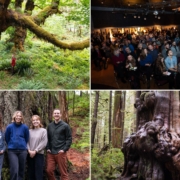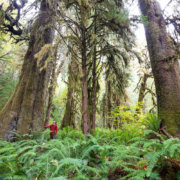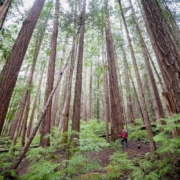Victoria, BC – This Earth Day, the Ancient Forest Alliance (AFA) and Endangered Ecosystems Alliance (EEA) are calling on the BC government to refocus on their incomplete measures to protect old-growth forests, implement their draft Biodiversity and Ecosystem Health Framework, and ensure a transition to a sustainable, value-added second-growth forest industry. At the same time, the groups are issuing a strong warning: commercial logging must not be permitted in protected areas under the guise of wildfire risk reduction.
“The BC government can go in two basic directions in response to the current tariff threats from the U.S.: take the easy but foolish route by falling back on the destructive status quo of old-growth logging and raw log exports, or instead take the opportunity to invest in a modernized, sustainable, value-added, second-growth forest industry that is the future of forestry in BC, while protecting the last old-growth forests,” said Ken Wu, Executive Director of EEA. “The verbal musings by the Ministry of Forests to discuss potential logging with BC Parks in parks and protected areas is a red flag for us – and a serious red line if it takes the form of commercial logging, as opposed to non-commercial restoration of fire-dependent ecosystems where decades of fire suppression has occurred. Crossing the red line into commercial logging of protected areas and/or Old-Growth Management Areas would become the biggest regret of the BC NDP government, environmentally speaking, if they choose to go there – we would ensure that this is so.”
This Earth Day, AFA and EEA are calling on the provincial government to:
- Establish a BC Protected Areas Strategy to proactively pursue the protection of priority ecosystems through shared decision-making with First Nations.
- Develop Ecosystem-Based Protection Targets to ensure endangered ecosystems and big-tree old-growth forests are fully protected in both legislated protected areas and in conservation reserves (forest reserves). The forthcoming Biodiversity and Ecosystem Health Framework offers the greatest opportunity to implement these targets.
- Provide “solutions space” funding to First Nations to help secure the remaining 1.3 million hectares of priority old-growth deferrals by offsetting lost forestry revenues.
- Ensure a transition to sustainable logging of second-growth forests, which now constitute the vast majority of forest lands in southern BC.
- Close logging loopholes by ending logging in forest reserves such as Old-Growth Management Areas and Wildlife Habitat Areas, and ensuring commercial logging within parks or conservation reserves remains prohibited.
- Expand a smart forest industry by incentivizing value-added second-growth manufacturing, ending raw log exports, and promoting eco-forestry.
- Create a BC Conservation Economy Strategy to support eco-tourism, clean tech, and sustainable industries in protected areas.

Ancient Forest Alliance Campaign Director TJ Watt stands in the unprotected Jurassic Grove near Port Renfrew in Pacheedaht territory.
“The BC NDP government should be thanked for its commitment to protect 30% by 2030 by securing over $1 billion in provincial-federal conservation financing to make it happen, deferring logging on 1.2 million hectares of the Technical Advisory Panel’s most at-risk old-growth, and starting the value-added, second-growth transition – but it still comes up short on both conservation policies and sustainable job creation,” said TJ Watt, Campaign Director of AFA.
In response to mounting pressures, including the threat of escalating U.S. tariffs, AFA and EEA call on the BC government to build a diversified and resilient economy by transitioning to a sustainable, value-added, second-growth forest industry, protecting old-growth forests in partnership with First Nations, and creating incentives to support a conservation-based economy.
“This Earth Day, we urge the province to move forward, not backward, to build a diversified, resilient economy in BC while undertaking the vital and overdue protection of endangered ecosystems,” said Watt. “The BC government can achieve this by establishing a BC Protected Areas Strategy to proactively seek the protection of candidate protected areas in priority ecosystems through shared decision-making with First Nations. This strategy should be guided by Ecosystem-Based Protection Targets to ensure endangered ecosystems and big-tree old-growth forests are fully protected, and in the interim, we urgently need ‘solutions space’ funding to offset First Nations’ lost forestry revenues to help secure the remaining 1.3 million hectares of priority old-growth deferrals.”
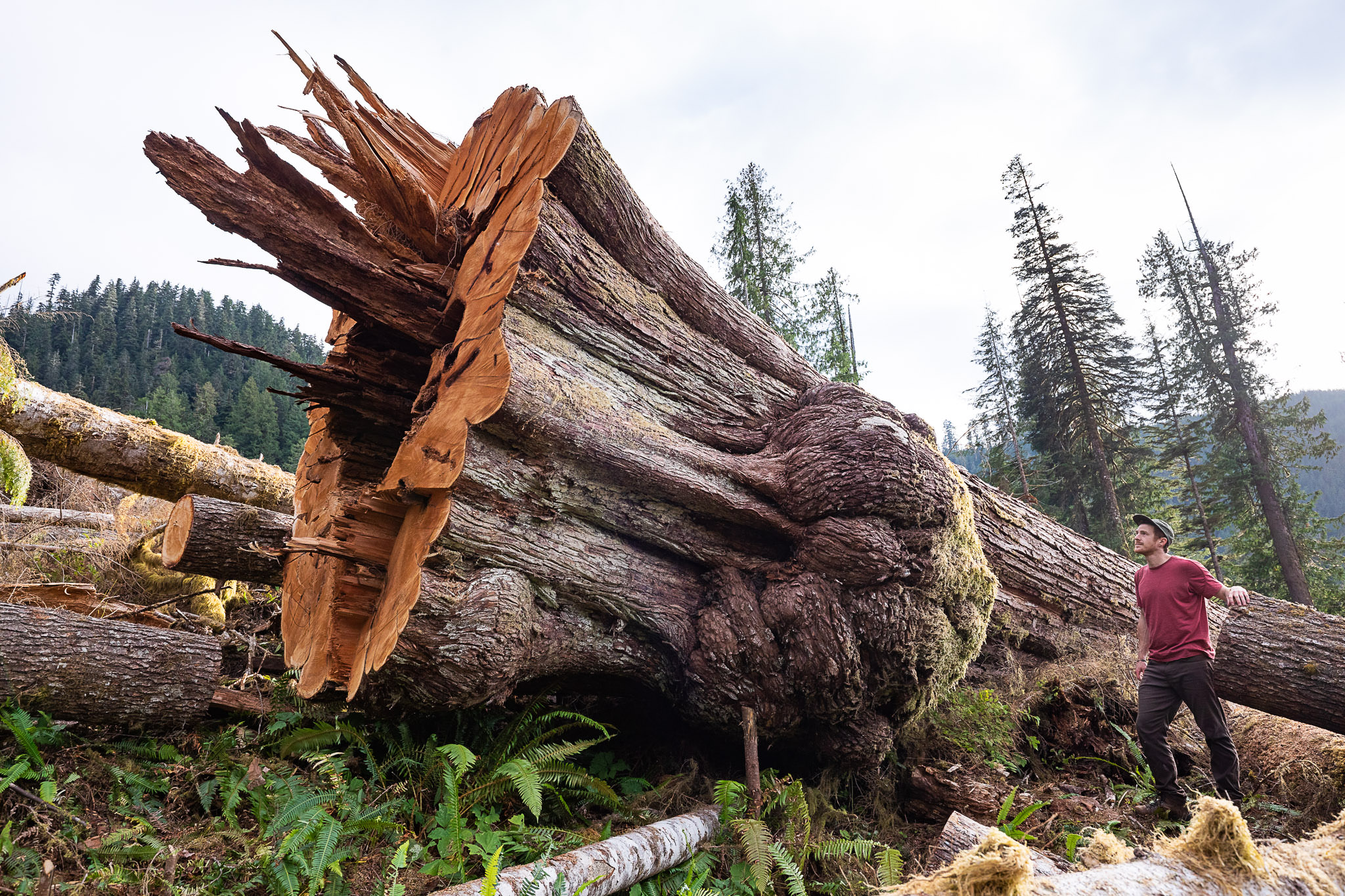
AFA’s TJ Watt beside a giant old-growth redcedar tree cut down by logging company Teal-Jones in the Caycuse Valley.
To secure permanent protection for endangered old-growth forests, the groups also issue a warning to the Ministry of Forests that commercial logging within protected areas under the pretext of wildfire risk reduction will be greatly opposed.
In fire-driven Interior ecosystems of BC dominated by lodgepole pine, Interior Douglas-fir, western larch, and Ponderosa pine, decades of fire suppression by the province, carried out to maximize timber values for logging companies, have disrupted natural fire cycles. In some areas, this has led to unnaturally dense stands with greater fuel loads, including allowing in-grown trees (that would normally burn down when they are smaller from regular, natural ground fires) to grow larger and then act as “fire ladders” that enable flames to climb from the forest floor into the canopies, where they can catch onto the branches of the largest trees. These forest giants are normally fire-resistant at their bases due to their extremely thick, fire-resistant bark on their lower trunks, often allowing them to survive successive natural fire cycles. The increased fuel loads and the dense fire ladder trees, combined with climate change, are thus creating more intensive forest fires.
In these instances, ecosystem restoration in protected areas in the form of non-commercial (i.e., not for sale) thinning, prescribed burns, and where appropriate, an ecological wildfire policy of allowing natural wildfires to burn where it is deemed safe for human communities, can be merited to help restore the ecology of these fire-driven ecosystems (much biodiversity is dependent on the aftermath of these fires, where life proliferates) and to minimize the ultimate fire risk for any nearby communities. BC Parks has already used these methods in the past.
However, commercial logging for profit in parks and protected areas under the guise of fire management would be a completely different activity. It would include targeting of the larger, more commercially valuable trees and would set a precedent and open the door for a much greater scale of logging that is far more impactful than ecosystem-restoration initiatives. As such, conservation groups completely oppose it.
In addition, it should be noted that none of this has any relevance to coastal or Interior rainforests, should any PR efforts be undertaken by government or industry to justify potential logging in old-growth rainforests in protected areas under a fake fire-risk management banner.
“If the Ministry of Forests is in discussions with BC Parks to permit commercial logging in protected areas under the pretext of reducing wildfire risk, this is a red line that must not be crossed under any circumstances,” said Wu. “Non-commercial ecosystem restoration and fire-proofing areas adjacent to human communities are very different than commercial logging. Allowing commercial logging for profit in parks, conservancies, or Old Growth Management Areas (OGMAs) under the guise of fire risk management would ignite the biggest conservation battle in years against the province.”
“Logging old-growth forests for commercial purposes in the name of fire prevention is a Trojan horse for ecological destruction,” said Watt. “The province must focus on tackling climate change, the key driver behind the increasing scale and severity of forest fires, and non-commercial ecological restoration, while securing the protection of endangered ecosystems, especially carbon-rich old-growth forests, which play a vital role in climate stability.”
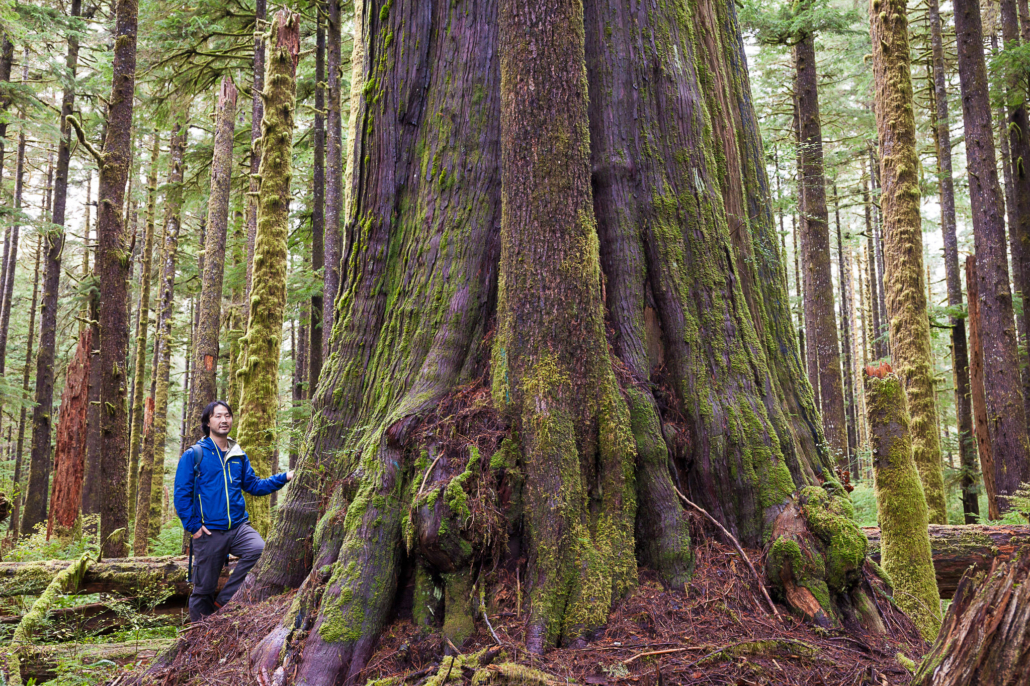
Endangered Ecosystems Alliance Executive Director Ken Wu stands beside a giant old-growth redcedar tree in the unprotected Eden Grove near Port Renfrew in Pacheedaht territory.
